Juicer is one kitchen appliance that has been in demand that is being highly utilized in healthy living and weight loss. In this article, I will walk you through what is cold press slow juicer and why it’s the best option to go after.
I have discussed in my previous article about Alternative Healthy Kitchen Appliance, that the slow juicer has become more popular because of the improved design and health benefits it offers.
Like blenders, it also has evolved with many new models emerging.
So, join me in discovering more about cold press slow juicer!
What is cold press Slow Juicer
A Cold Press Slow Juicer is a type of juicer that has lower power and a slower rotational speed rate.
The term “cold press” literally means that the slow juicer does not create heat during juicing operation because of the low speed employed by the motor as designed. Thus, preventing oxidation and preserving juice’s freshness and nutrients.
A slow juicer can also extract 50% more juice compared to a conventional type of juice extractor. One good example is the centrifugal juicer. Usually, this type of juicer is with higher power (e.g. 1000W), thus, juicing is done at a high speed (e.g. >12,000 RPM) and that can result in oxidation because of the heat produced during the high-speed rotation of the sieve while the juice is being extracted.
Types of Slow Juicers
As noted in my previous article about SDA, the slow juicer comes in different designs. Currently, there are two types of slow juicers, they are:
- Whole Slow Juicer – this design is with a bigger feeding mouth where you can insert the whole fruit, thus, the name “whole” slow juicer to describe and separate it from the standard type.

- Slow Juicer (standard type) – this design is with a smaller feeding mouth where you need to cut the fruit before you could insert it for juicing (the sample that I will be showing is the standard type slow juicer).
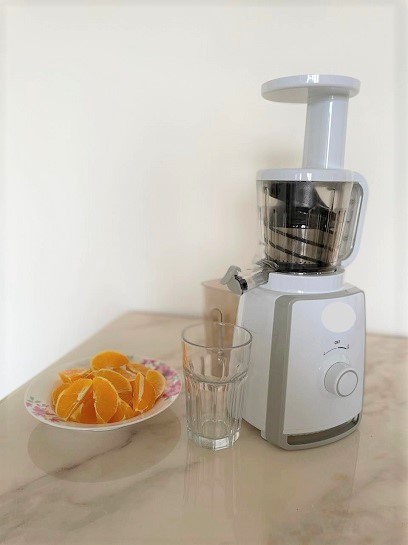
Note: Both designs utilize the same low-speed motor and auger (screw-type presser). The only difference between the two designs is the size of the feeding mouth.
Main parts of a Slow Juicer

Cold Press Slow Jucier overview
This slow juicer sample that we will discuss have the following specs:
Power: 150W
Voltage/Freq: 220-240V, 50/60Hz
Speed: ~40 RPM (speed rate may vary when measured)
Supplied accessories: Juice and pulp container x2pcs, brush x1pc, pusher x1pc
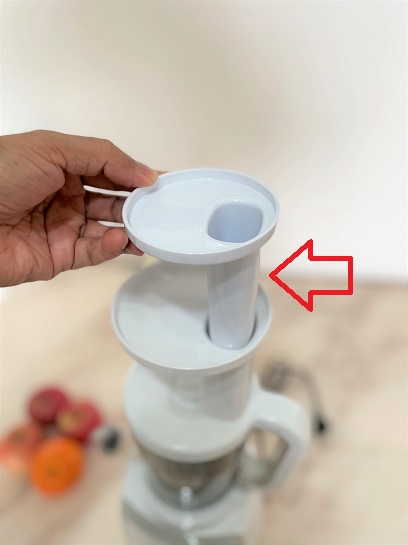
Pusher
The pusher is used to push the fruit or vegetable that is subjected to juicing, just in case, it gets stuck in the feeding mouth.

Hopper
For this particular model, the hopper has four main functions- act as a cover, feeding tube, secure the top of the auger, and push down the lever inside of the handle to activate the safety switch.
Thus, the hopper must be installed correctly for the slow juicer to function properly.

Auger (also known as screw presser)
Auger is responsible for the pressing process to extract the juice of the fruits and or vegetables.
It has to be noted that there are different types of augers depending on the design of the slow juicer.
This sample’s auger is designed with a strainer and hollow on the inside.

Bowl
This sample’s bowl is where the handle is connected and inside is the lever that is used to push the safety switch.
The bowl also has juice and pulp outlets.
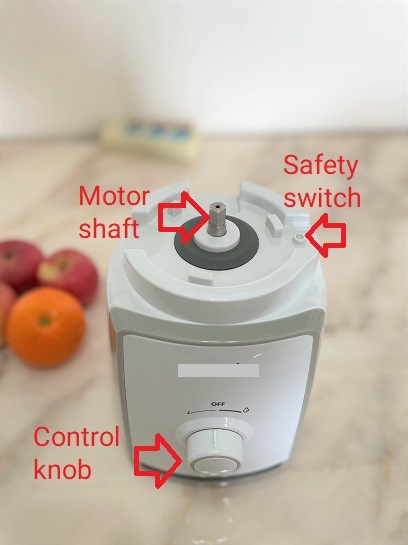
Base (overview)
The base is where the motor is enclosed.
So, the base will have the motor shaft that will connect to the auger, and the safety micro-switch to ensure that the unit will not function if the installation of the bowl is not correct.
The control knob has two functions, the forward motion for juicing operation and the reverse motion to unclog if there are stuck fruit or vegetables.

Base (rear side)
The rear side of the base is where the AC cord is located as well as some safety warning labels.
Depending on the slow juicer’s design and operational restriction it will be stated on the safety warning labels, (e.g. continuous operation should not be more than 10 minutes and other warnings that are necessary to be visible to the end-user).
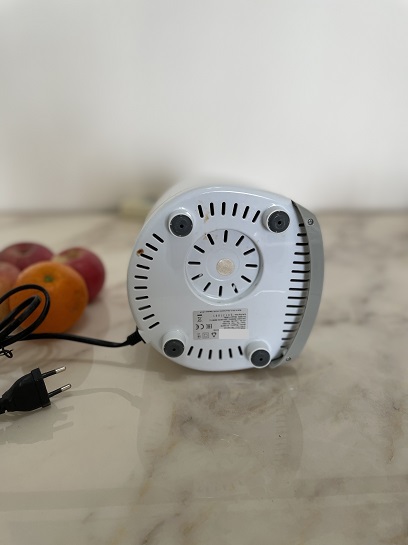
Base (bottom side)
The bottom side of the base is where the rating label bearing the product’s technical specification is positioned.
Also, the bottom side of the base has non-skid rubber feet.
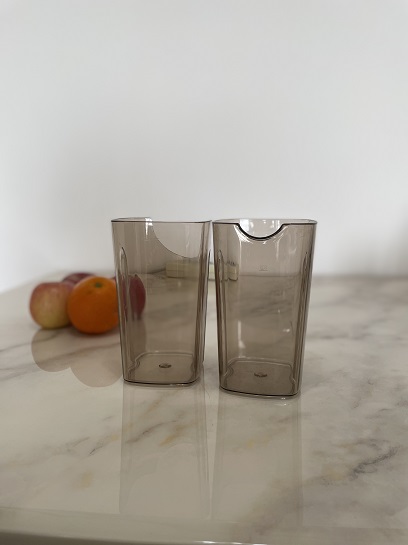
Juice and Pulp container
This is a common accessory for cold press slow juicers.
One container is used to collect the pulp and another to collect the extracted juice.

Cleaning brush
A cleaning brush is also a common accessory for cold press slow juicers.
This is especially important when cleaning the auger with a strainer as some fruit pulp sure will get stuck.
How does a cold press Slow Juicer works?
Slow juicers operate at lower power and slower rotational speed. As provided above, the specification of the featured sample has a power of 150W and the speed is approximately 40 RPM (revolution per minute).
So, let me show you how a slow juicer is assembled, and let’s do some actual juicing.
Please note that different designs will have different ways of the installation process. What I will be showing is according to my sample.
Always refer to your instruction manual to ensure you don’t damage your slow juicer by forcing it with the wrong installation.
Setting a Slow Juicer
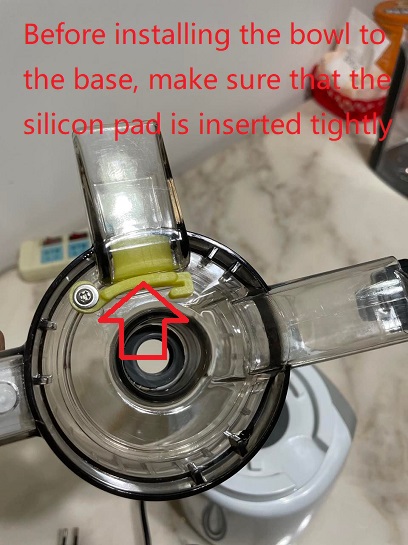
Inserting the silicon pad tightly
Make sure to insert the silicon pad tightly before installing the bowl to the base.
The pad serves to block the extracted juice from going to the pulp container.
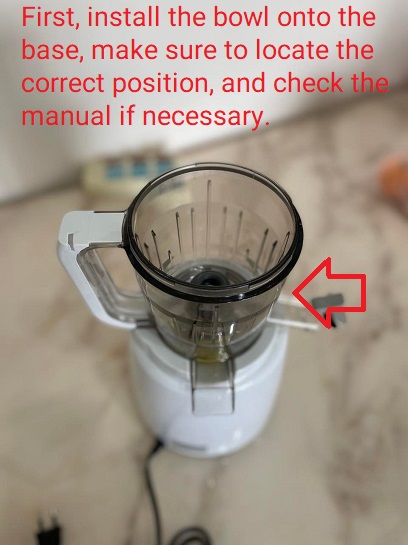
Installing the bowl to the base
Check the correct position and install the bowl onto the base.
Ensure the correct orientation of the handle as well as the juice and pulp outlets.
Always refer to the instruction manual to make sure you do it correctly.
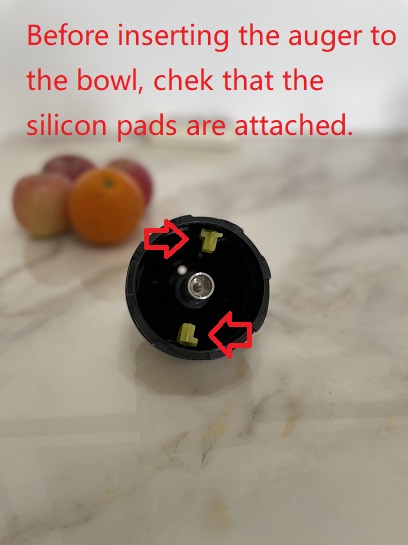
Checking silicon pads on the auger
This will vary according to design, but for this sample, the auger is hollow and have two silicon pads that act as a mop to push the pulp aside making sure it does not comes together with the juice.
Thus, before inserting the auger to the bowl make sure the pads are tightly inserted.
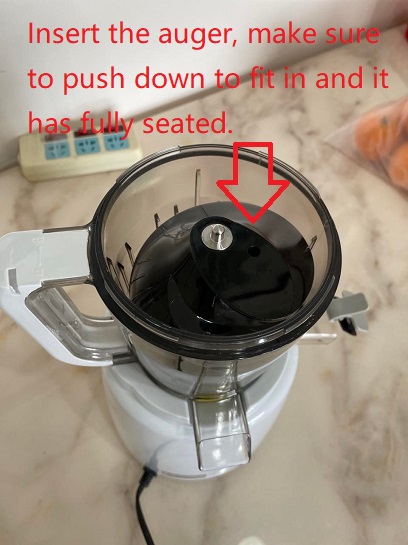
Inserting the auger to the bowl
Insert the auger onto the bowl taking into consideration the orientation of the motor shaft.
Make sure the auger fits well and is fully seated.
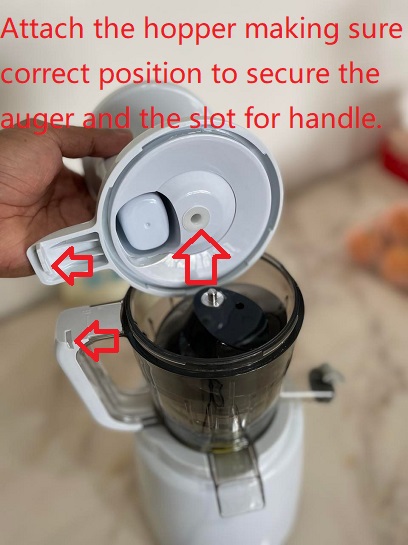
Attaching the hopper
Locate the center and make sure it secures the auger. Likewise, the slot for the handle fits well. This is to ensure that it can push down the lever to toggle the safety switch so that the unit can function.

Complete assembled Slow Juicer
Now we have the completely assembled slow juicer and are ready for juicing.
Actual juicing utilizing a cold press Slow Juicer
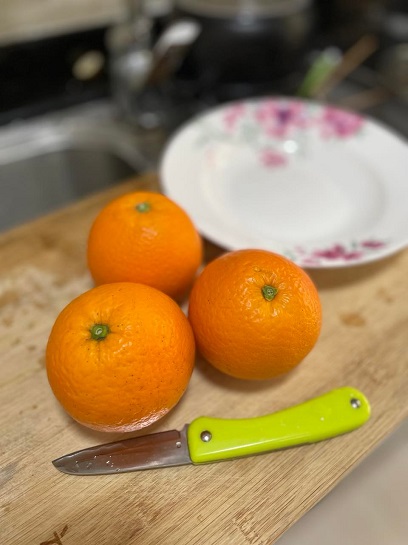
Ingredient preparation
I have prepared three fresh oranges for this simulation.
We’ll see how much juice will be extracted from these three oranges.
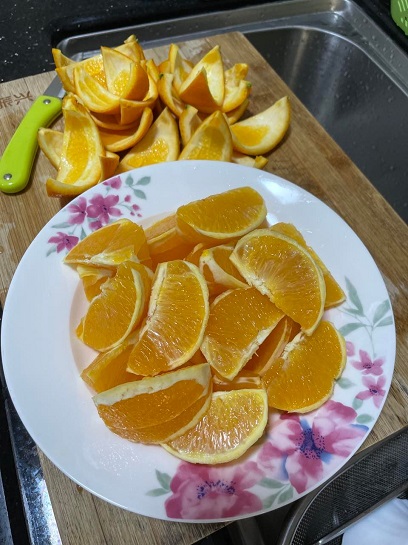
Peeled oranges
To ensure I don’t get the bitter taste of the orange skin juice, I have decided and removed it.
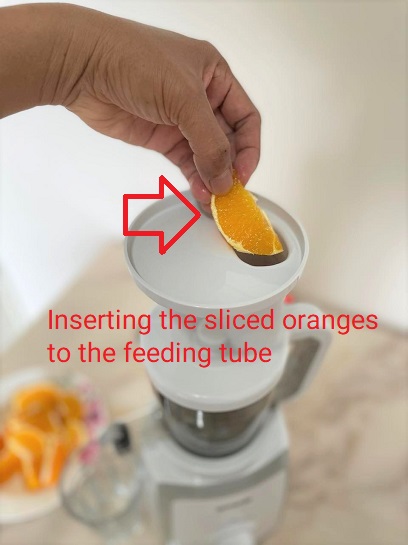
Feeding the sliced orange for juicing
So I started inserting the sliced orange into the feeding tube (of course making sure I have washed my hand clean enough).
Slicing the fruit into considerable size has to be done for the standard type slow juicer…
… and as I have made known earlier, for whole slow juicer type… you can directly feed the whole fruit and the juicer will do its job.
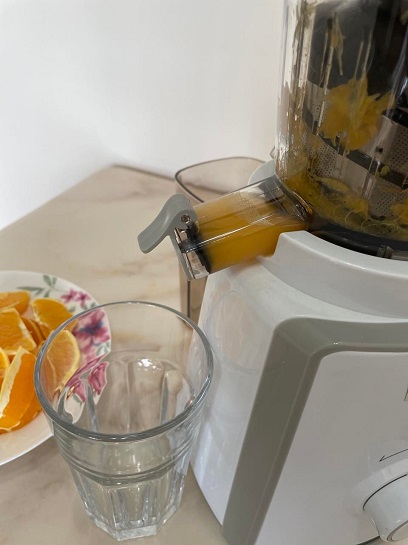
Start juicing
Turn the control knob to forward motion for juicing to start.
In this photo, the slow juicer has started operation, and juice is now collected at the juice outlet ready to be released.
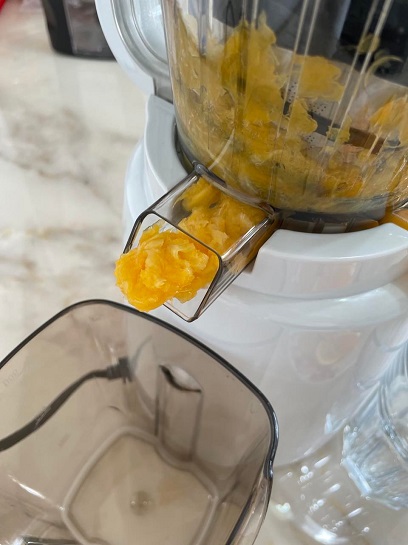
Dispensed pulp
As the auger rotates the pulp residue is pushed out and with the aid of the silicon pad, it ensures that no juice is coming out from the pulp outlet.

Releasing extracted juice
Release the juice as necessary, don’t allow more juice inside the bowl to avoid any chance of it going to the pulp container.
To unclog or in case the auger got stuck, turn the control knob to reverse. Then proceed with juicing as normal.

Extracted juice
Using a slow juicer, the three oranges were able to produce juice extract of about 250 to 300ml.
The orange juice extracted tastes fresh and like real fruit juice, a much need vitamin C for me.
Tips: 1. Use fresh fruit and vegetables, as they contain more juice. Pineapples, beetroots, celery stalks, apples, cucumbers, carrots, spinach, melons, tomatoes, pomegranates, oranges, and grapes are particularly suitable for processing in the juicer. 2. You don't need to remove thin peels or skin. Only remove thick peels (e.g. those of oranges, pineapples, and uncooked beetroots). Also, remove the white pith of citrus fruits because it has a bitter taste. 3. Fruits that contain starch, such as bananas, papayas, avocados, figs, and mangoes are not suitable for processing in the juicer (use a blender instead or food processor). 4. Drink the juice immediately after you have extracted it. If it is exposed to air for some time, the juice loses its taste and nutritional value.
What is the difference between a slow juicer and a cold press juicer?
There is no difference… as I have implied a “cold press slow juicer” is also known as a “slow juicer”.
Cold press slow juicer is a description used more for marketing purposes, to outline the difference between slow juicer from common juicer (e.g. centrifugal juicers).
Why is it called cold press?
The term “cold press” is to denote that slow juicers don’t create heat during juicing because of the lower power utilized by a special motor and a slower rotational speed.
Thus, promoting the preservation of fruits and vegetable enzymes in juice extract as well as other vital nutrients are retained.
Are cold press juicer worth it?
In my opinion, a cold press slow juicer is worth it for the following reasons:
- Retains most nutrients and can hold freshness of the extracted juice (if kept refrigerated)
- Prevent oxidation because there’s no heat created during juicing process
- Extracts more juice than the conventional juice extractors
- Lighter and smaller than common centrifugal juicers
- Easy to clean
- Lower noise level (during juicing process)
Final Thoughts
So in conclusion, we were able to lay down the necessary information about what is cold press slow juicer machine and at the same time, we were able to establish how does it work.
Moreover, we also have defined its main parts.
Consequently, we discovered why a slow juicer is the best option there is for juicing. Employing a special low-power motor with a slower rotational speed is crucial in the cold press juicing process that preserves fruits and vegetables’ vital nutrients by preventing oxidation.
There you have it folks, again thank you for reading. If you find this article helpful, or you have some questions or suggestions, please leave a comment below. I will answer them as soon as I can to the best of my knowledge.
